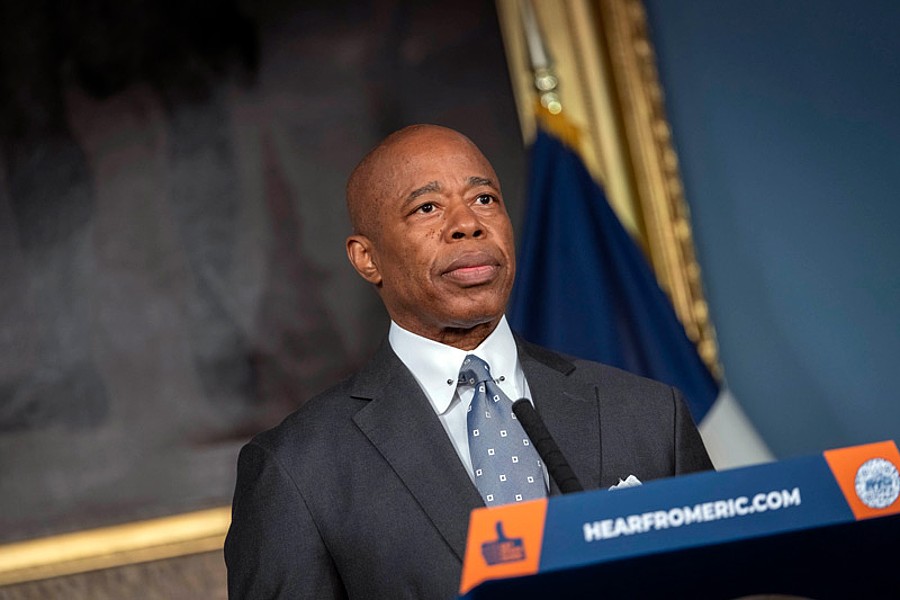
By: Dr. Burchell M. Marcus
Across the country, patients are paying more for their prescription drugs than they ever have before. New York is not immune to this problem.
Last year alone, our state spent the third most of any state on prescription drugs. While patients bear the burden of these costs, it’s insurance companies and their Pharmacy Benefit Managers (PBMs) that profit.
Insurance companies rely on their PBMs to serve as the middlemen between them, prescription drug manufacturers, pharmacies and patients. The PBMs dictate what both manufacturers and patients pay, as well as what treatments patients can access.
Over the last several years extreme consolidation has taken place in the PBM industry. Now just three companies (OptumRx, CVS Caremark, and Evernorth) control 80% of the PMB marketplace. Each of these PBMs is a part of major publicly traded health conglomerate that includes an insurance company.
The sheer size of these corporations has given them near complete control over the prescription drug industry. The combined insurance companies and PBMs are larger than any biopharma manufacturer.
As policymakers in Washington, DC, look into prescription drug costs, they must start reining in PBMs. In recent years, the biggest PBMs have begun to use their position in the market to extract profits, no matter who suffers.
Note, for example, how PBMs calculate patient co-pays. They use a bait-and-switch method that helps them squeeze exorbitant amounts of money from both patients and drug manufacturers.
PBMs calculate patient costs based on the “list” price of drug, but that is not the price the big PBMs pay. The big PBMs negotiate manufacturer rebates and discounts that lower their costs. This lower price is called the “net” price.
Patients would save money if PBMs and insurance companies calculated out-of-pocket expenses based on the “net” price that PBMs actually pay, but that’s not how it works for these profit driven entities.
Another issue is PBMs use of an opaque fee structure that rewards them for only offering more expensive drugs. Under this fee structure, the higher the cost of a drug, the higher the fee a PBM receives. The three largest PBMs have excluded over 1,110 drugs in recent years. Many of these drugs could have saved patients money through lower co-pays and deductibles, but PBMs chose to exclude them and only offer higher-priced medicines that provide the companies more in fees.
PBMs invest nothing in bringing new treatments to market, yet after manufacturer rebates, discounts, and fees, they’re receiving 50% of the “list” price. For some manufacturers it’s even worse. Novo Nordisk recently said that they only receive a paltry 25 cents on the dollar of the “list” price of drugs in their portfolio.
Any serious effort to address prescription drug costs must account for PBMs and the role they play. Failure to act will mean that patients continue to get taken for a ride. Net prices for brand-named prescription drugs are only inching up 1% annually, yet many patients have seen their out-of-pocket costs rise by 50% within the last decade.
For far too long PBMs have been able to operate in a black box, keeping their practices hidden from the public and helping to deliver profits for their insurance company owners. Dozens of bills before Congress have sought to make them more transparent and more accountable to the public. It’s time these bills be given serious consideration.
New Yorkers continue to pay too much for health care. When it comes to prescriptions, the only way to reign in prices is by tackling the entities that determine what patients pay. Congress must act and not only require greater transparency with PBM rebates, discounts, and fees, but they must also stop PBMs from linking fees to drug costs. Anything less and the big PBMs will still have the power to prioritize profits over patients.
Dr. Burchell M. Marcus
Dr. Burchell is Director of the Brooklyn branch of the Community Advocate and Development Organization.
Become a Harlem Insider!
By submitting this form, you are consenting to receive marketing emails from: . You can revoke your consent to receive emails at any time by using the SafeUnsubscribe® link, found at the bottom of every email. Emails are serviced by Constant Contact










